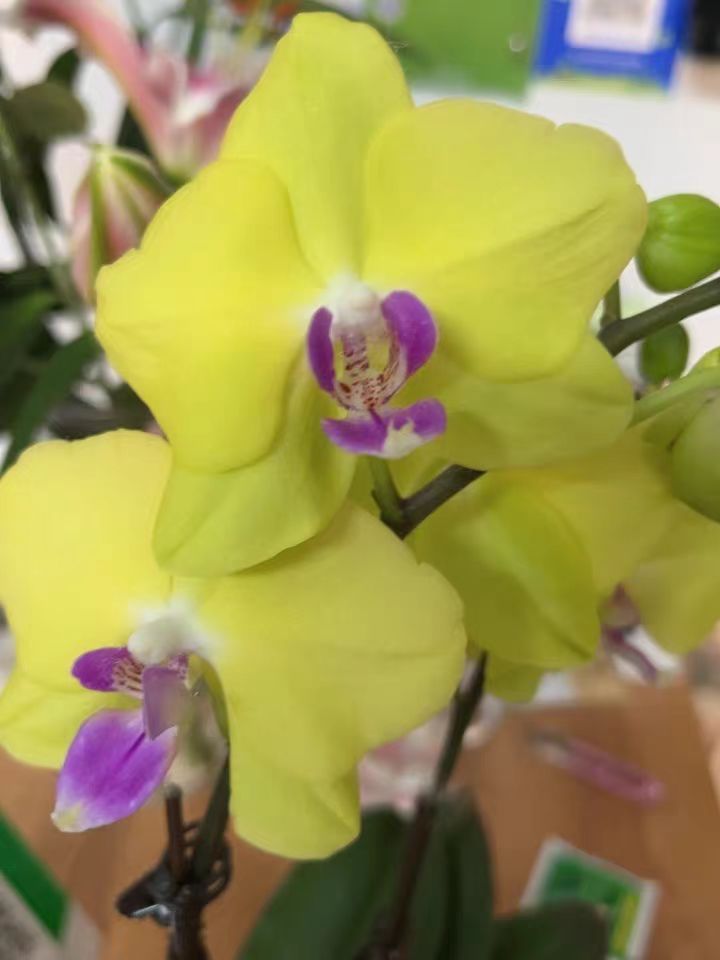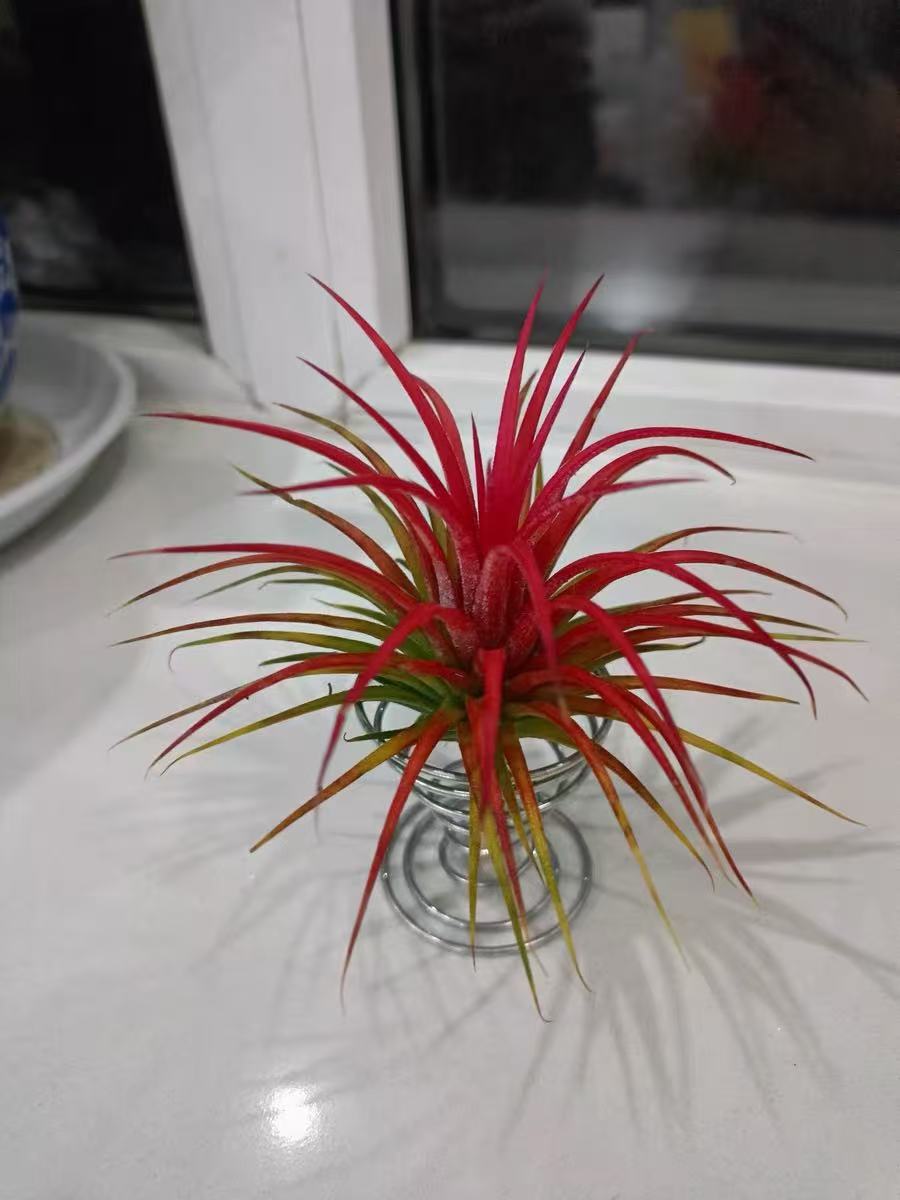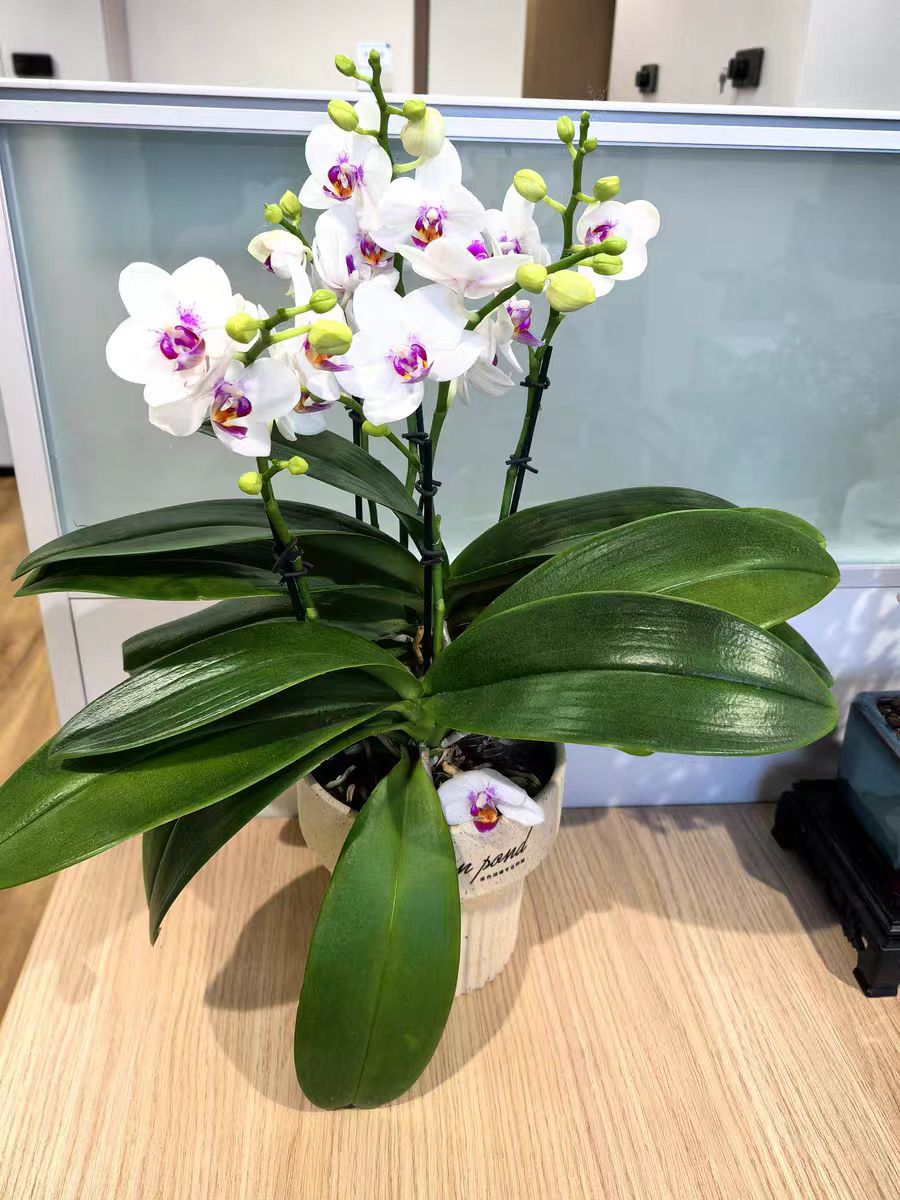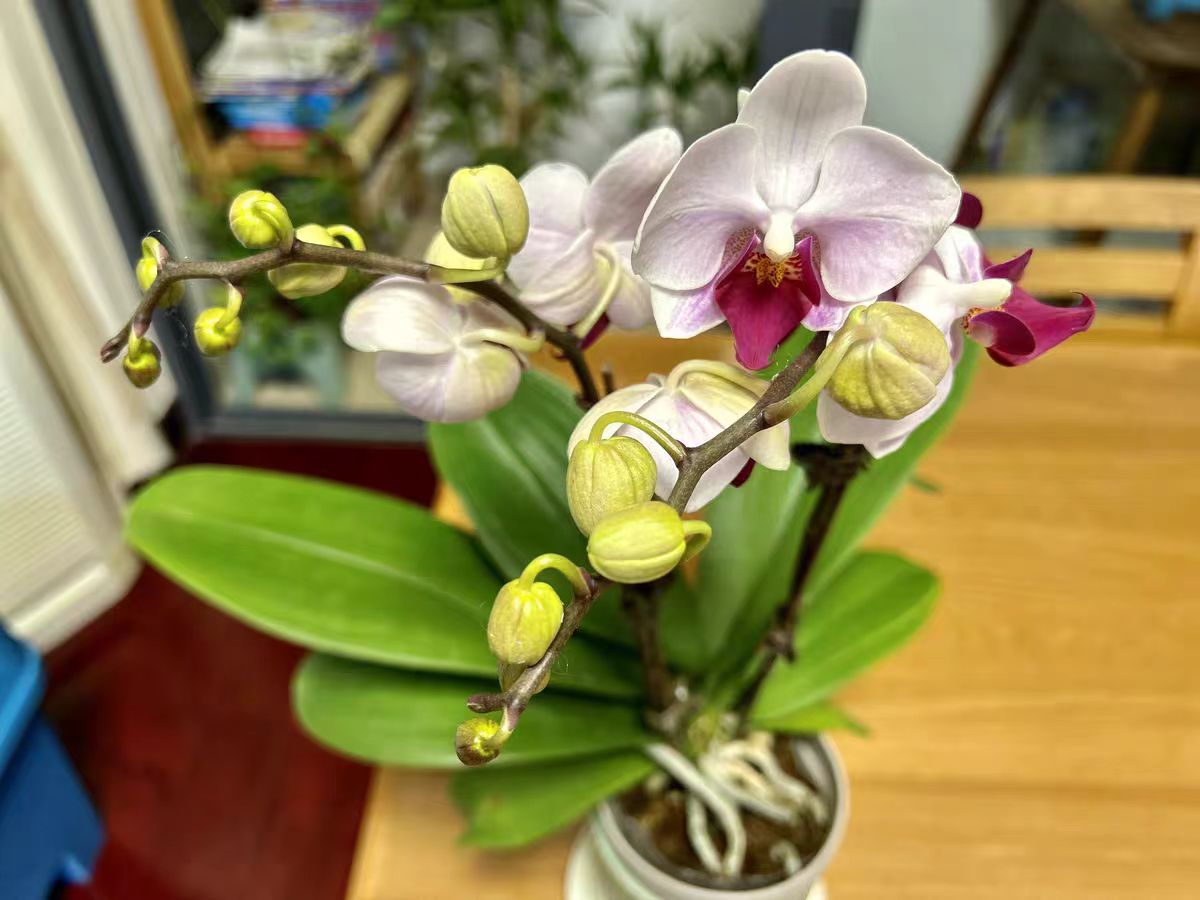Cultivating Phalaenopsis indoors can add vitality and beauty to the home. However, to ensure the healthy and vigorous growth of Phalaenopsis, sufficient light and effective pest management are crucial.
Phalaenopsis has specific light requirements. They prefer bright diffused light rather than intense direct sunlight. Here are some effective strategies for providing sufficient light for indoor Phalaenopsis:
Choose an Appropriate Location: Place the Phalaenopsis near the windowsill of an east-facing or west-facing window. These locations can provide suitable bright diffused light during the day. Avoid placing the Phalaenopsis directly on a south-facing balcony, especially at noon in summer, as the overly strong sunlight may cause the leaves to be burned. If the light is too intense, you can use thin curtains for appropriate shading.
Adjust the Light Intensity: Phalaenopsis at different growth stages have different light requirements. Young seedlings need weaker light, while medium and large seedlings require gradually increased light. During the flowering induction period, the light can be controlled at 20,000 to 35,000 Lux, and maintaining the light for more than 8 hours a day is beneficial for flower bud differentiation. You can use a light meter to monitor the light intensity to ensure that the Phalaenopsis receives appropriate light.
Use Plant Growth Lights: In winter or when the indoor light is insufficient, you can consider using plant growth lights to provide additional light for the Phalaenopsis. Plant growth lights can simulate natural light, promote the photosynthesis of Phalaenopsis, ensure its normal blooming, and maintain bright flower colors.
Pay Attention to the Relationship between Light and Temperature: When the temperature is low in winter, the light intensity can be appropriately increased, but direct sunlight should be avoided to prevent the leaves from being burned. When the temperature is high in summer, direct sunlight should be reduced to prevent the plants from entering a semi-dormant state.
It is a common problem that indoor Phalaenopsis attract pests. However, through reasonable maintenance management and effective pest control measures, the occurrence of pests can be greatly reduced. Here are some practical solutions:
Manually Clean Pests: Regularly check the leaves, flowers, and roots of the Phalaenopsis, and clean the pests in a timely manner when found. You can crush small pests such as scale insects by hand, or spray alcohol on the affected areas to eliminate them. After treatment, check regularly to prevent the recurrence of pests.
Use Pesticides for Control: When the pest situation is severe, you can choose to use special pesticides for control. Pesticides such as Sumitomo's red bottle spray from Japan and Chlorpyrifos are specifically targeted at certain pests and have significant effects. Be sure to carefully read the instructions for use before using pesticides to ensure safety and maximize the effectiveness.
Keep the Air Circulated: Keep the air around the Phalaenopsis circulated, and avoid a humid and stuffy environment, which can reduce the possibility of pest breeding. Open the windows regularly for ventilation, or use a fan to increase air flow.
Regularly Clean Dead Branches and Leaves: Regularly clean up the fallen leaves and dead branches to reduce the breeding ground for pests. Keep the surface of the potting soil clean, and avoid water accumulation or residues becoming a breeding ground for pests.
Enhance the Plant's Resistance: Fertilize and water reasonably to maintain the healthy growth state of the Phalaenopsis. Healthy plants are more capable of resisting pest attacks. Apply a diluted liquid fertilizer once every 2-4 weeks during the growing period, and reduce the frequency of fertilization during the dormant period.
Through the above methods, we can provide sufficient light for indoor Phalaenopsis and effectively solve the problem of attracting pests. Let the Phalaenopsis thrive in the indoor environment and add more color to our lives.
How to Provide Sufficient Light for Indoor Phalaenopsis?

Share with
Tagged in :




Leave a Reply